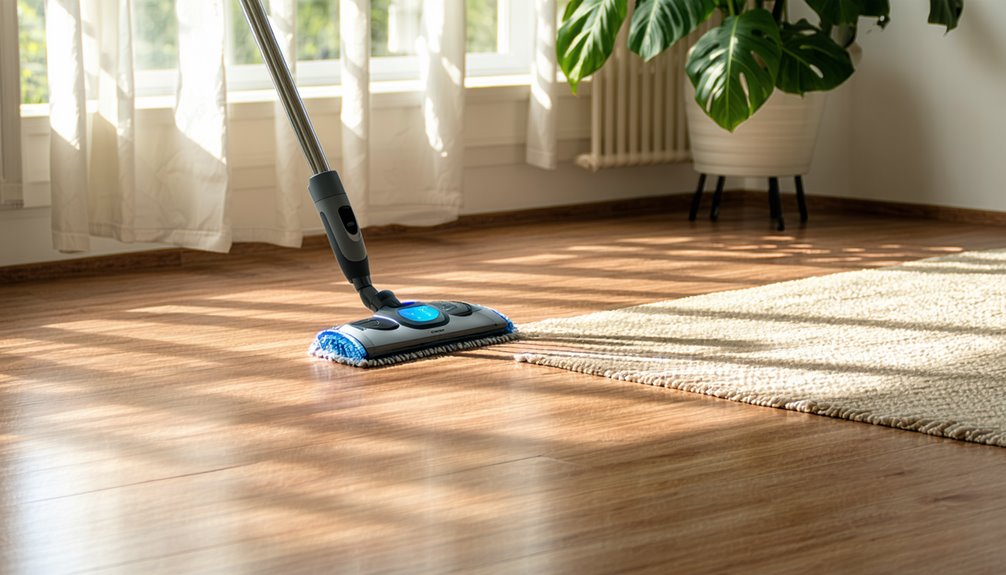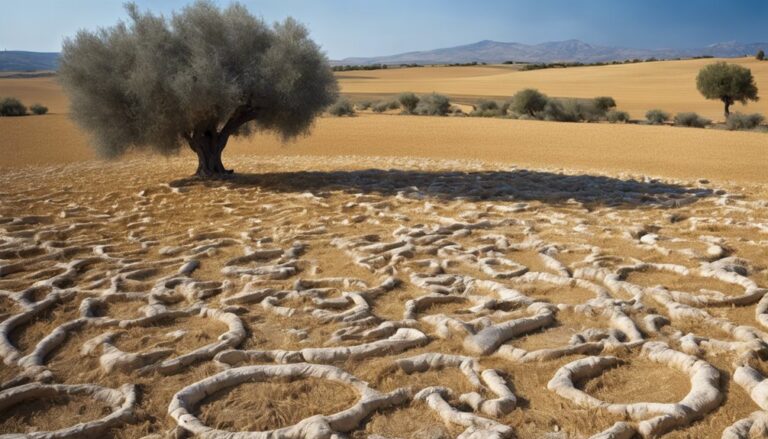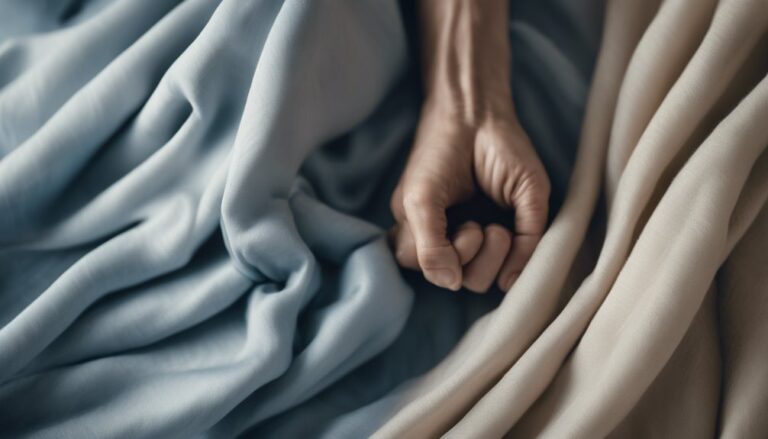To clean engineered hardwood floors, start by sweeping or dusting daily with a soft-bristled broom or microfiber cloth to remove debris. For spills, wipe them up immediately to avoid staining. When mopping, use a damp microfiber mop with a pH-balanced cleaner designed for engineered hardwood; avoid excess moisture to prevent warping. Perform regular deep cleans by vacuuming or sweeping first, then using the damp mop method. Additionally, place protective pads under furniture and use area rugs in high-traffic spots. For more insights into maintaining these beautiful floors, you'll want to explore additional care strategies.
Understanding Engineered Hardwood
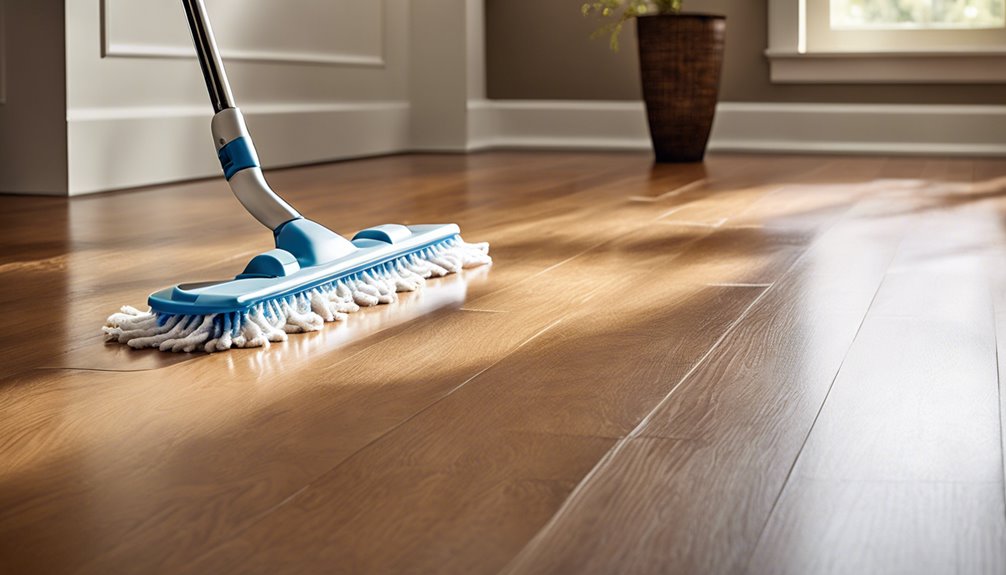
Engineered hardwood, a popular flooring choice, combines the beauty of natural wood with enhanced durability. One of the key engineered hardwood benefits is its multi-layer construction, which typically consists of a top layer of real hardwood veneer bonded to layers of plywood or high-density fiberboard. This engineered hardwood construction provides stability, making it less prone to warping compared to solid hardwood.
You'll find that this flooring can withstand temperature fluctuations and moisture, making it suitable for various environments, including basements and kitchens. Additionally, engineered hardwood offers a wide range of styles and finishes, ensuring you can achieve the aesthetic you desire. Its ease of installation and maintenance further contribute to its appeal, providing both freedom and functionality in your living space.
Essential Cleaning Supplies
When it comes to cleaning engineered hardwood floors, having the right supplies is essential for maintaining their appearance and longevity. You'll need a mix of recommended cleaning products, necessary tools, and eco-friendly options to guarantee a thorough yet gentle cleaning process. Let's explore what you'll need to keep your floors looking their best.
Recommended Cleaning Products
To effectively maintain the beauty and integrity of your engineered hardwood floors, choosing the right cleaning products is essential. You can opt for commercial cleaners specifically designed for hardwoods or natural solutions that are gentle yet effective. Here's a quick comparison of options:
| Type of Cleaner | Benefits |
|---|---|
| Commercial Cleaners | Fast-acting, convenient |
| Natural Solutions | Eco-friendly, safe for pets |
When selecting a cleaner, confirm it's pH-balanced and free of harsh chemicals. Always follow the manufacturer's recommendations to avoid damaging your floors. With the right products, you'll keep your floors looking pristine while enjoying the freedom of a clean and healthy home environment.
Necessary Tools and Equipment
Choosing the right cleaning products is just the beginning; having the proper tools and equipment is equally important for maintaining your engineered hardwood floors. Investing in quality cleaning tools can make a significant difference in how effectively you care for your flooring. Here are four essential items you'll need:
- Microfiber Mop – Gentle yet effective, it lifts dirt without scratching.
- Soft-Bristled Broom – Ideal for sweeping away debris without damaging the surface.
- Vacuum Cleaner – Use one with a hardwood setting to avoid scratches while removing dust.
- Damp Cloths – Perfect for spot cleaning and maintaining shine without excess moisture.
With the right flooring equipment, you'll guarantee your engineered hardwood stays beautiful and well-maintained for years to come.
Eco-Friendly Options Available
While traditional cleaning products can be effective, they often contain harsh chemicals that may harm both your engineered hardwood floors and the environment. Instead, consider using natural cleaners made from simple ingredients like vinegar, baking soda, or essential oils. These options not only clean effectively but also promote sustainable practices that benefit your home and the planet. For everyday cleaning, mix a solution of water and vinegar to gently remove dirt and grime without damaging your floors. Additionally, look for eco-friendly commercial cleaners that specifically list engineered hardwood as safe. By choosing these eco-friendly options, you're not just protecting your investment; you're embracing a lifestyle that values health, sustainability, and environmental consciousness.
Daily Maintenance Tips
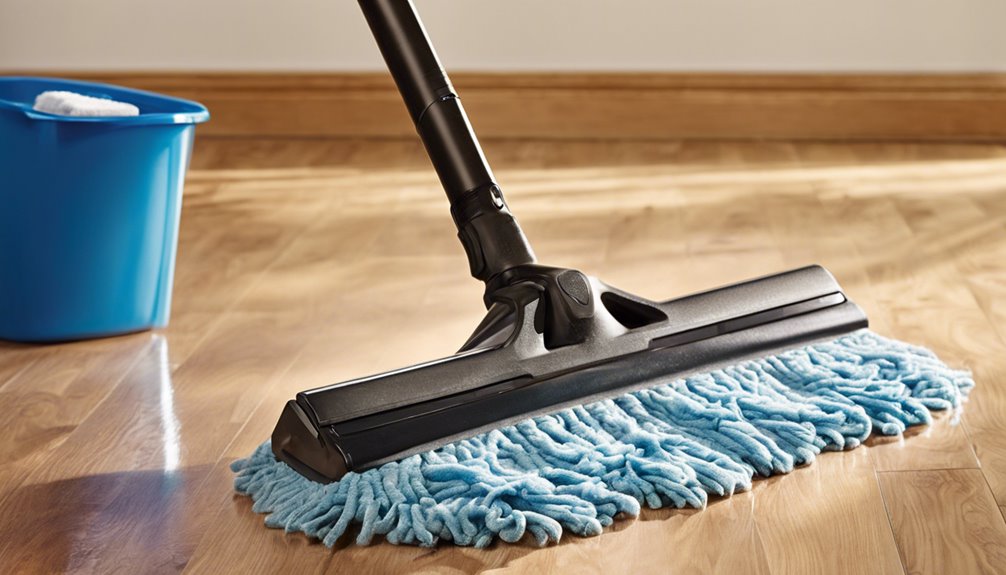
Since maintaining the beauty of your engineered hardwood floors requires consistent care, it's essential to establish a daily cleaning routine. This guarantees you keep dirt and debris at bay, enhancing their lifespan and appearance. Here are four daily maintenance tips to follow:
- Sweep or Dust: Use a soft-bristle broom or microfiber cloth to remove dust and dirt daily.
- Spot Clean: Wipe up spills immediately with a damp cloth to prevent stains.
- Avoid Water: Keep excess moisture away; engineered hardwood can warp if overly wet.
- Use Protective Mats: Place mats at entrances to minimize tracked-in dirt.
Deep Cleaning Techniques
To maintain the pristine look of your engineered hardwood floors, it's crucial to incorporate deep cleaning techniques into your routine. Start by using a vacuum or a soft-bristle broom to remove dust and debris. For deeper cleaning, consider employing steam cleaning as one of the effective deep cleaning methods—just make sure your floor can withstand the moisture. Afterward, use a damp microfiber mop with a mixture of water and a gentle hardwood floor cleaner to enhance sanitization. This method not only cleans but also helps in floor sanitization techniques, killing germs without damaging the finish. Finally, allow your floors to air dry completely to prevent moisture buildup, making certain your engineered hardwood remains beautiful and well-maintained for years to come.
Dealing With Stains
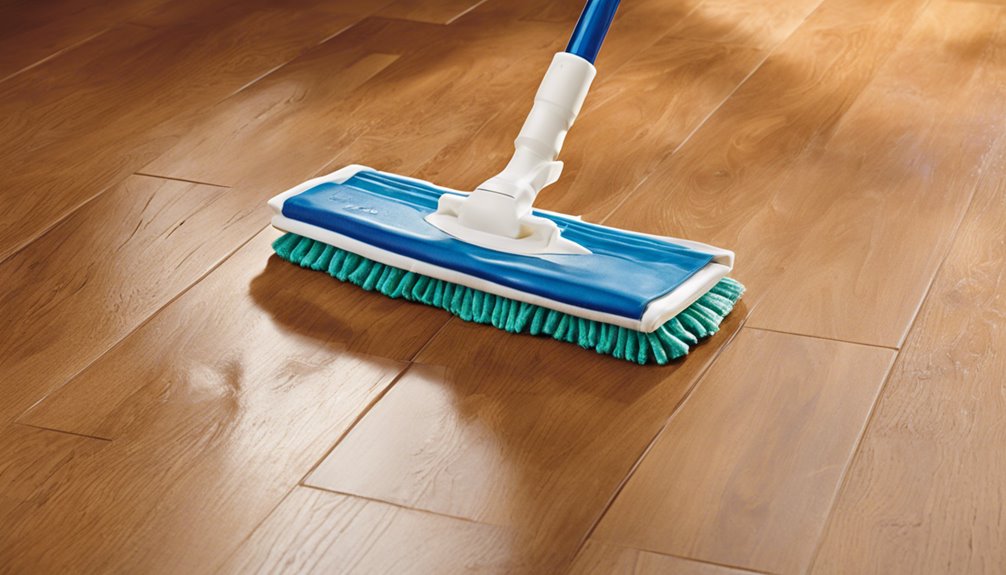
Stains can be a common concern for homeowners with engineered hardwood floors, but addressing them promptly can prevent lasting damage. For effective stain removal, follow these steps:
- Blot the stain immediately with a clean cloth to absorb as much liquid as possible.
- Use a mild cleaning solution specifically designed for hardwood floors, applying it gently to the stained area.
- Rinse the area with water and dry it thoroughly to avoid moisture damage.
- Apply a protective sealant after the area is clean to enhance stain prevention.
Protecting Your Floors
To keep your engineered hardwood floors looking their best, regular maintenance practices are essential. Simple steps, like sweeping and mopping, can prevent dirt buildup and scratches. Additionally, using protective pads under furniture can greatly reduce the risk of damage from everyday use.
Regular Maintenance Practices
Maintaining the beauty of your engineered hardwood floors requires consistent attention and care. Establishing a regular maintenance schedule is essential for preserving their elegance and longevity. Here are some key practices you should follow:
- Dust Daily: Use a microfiber mop to remove dirt and debris, keeping your floors free from scratches.
- Clean Weekly: Depending on foot traffic, adjust your cleaning frequency. Use a damp mop with a pH-balanced cleaner.
- Avoid Excess Water: Never saturate your floors; too much moisture can cause warping.
- Inspect Regularly: Routinely check for signs of wear or damage, addressing issues promptly to avoid further deterioration.
Use Protective Pads
Using protective pads on furniture legs is one of the simplest yet most effective ways to safeguard your engineered hardwood floors. These pads act as a barrier, preventing scratches and dents caused by furniture placement. Whether you're rearranging your living room or setting up a new office, attaching pads to chairs, tables, and sofas is essential for floor protection. Choose high-quality felt or rubber pads for ideal cushioning and durability. Regularly check the pads for wear and replace them as needed to maintain their effectiveness. By being proactive about floor protection, you not only preserve the beauty of your engineered hardwood but also extend its lifespan, allowing you to enjoy your space freely and without worry.
Avoiding Common Mistakes

While cleaning engineered hardwood floors may seem straightforward, many homeowners inadvertently make mistakes that can damage their flooring. To help you avoid common pitfalls and debunk cleaning myths, here are four important tips:
- Using excessive water: Too much moisture can warp your flooring; always use a damp mop instead of soaking it.
- Ignoring manufacturer recommendations: Always check your floor's care instructions to avoid using inappropriate cleaners.
- Using abrasive materials: Avoid scrub brushes or harsh chemicals that can scratch or dull your finish.
- Skipping regular maintenance: Don't wait too long between cleanings; build-up can lead to more extensive damage.
Long-term Care Strategies
Although you may think that cleaning engineered hardwood floors is a one-time task, long-term care is crucial for preserving their beauty and longevity. To maintain your floors, consider incorporating moisture control strategies. Verify humidity levels stay between 30-50% to prevent warping or cracking. Regularly inspect your floors for signs of wear and consider floor refinishing techniques when necessary. Refinishing can rejuvenate the surface and extend its life, but it's imperative to use products compatible with engineered hardwood. Additionally, protect your floors from scratches by using furniture pads and avoiding heavy foot traffic in vulnerable areas. By implementing these strategies, you'll enjoy your engineered hardwood floors for years to come, maintaining their elegance and functionality.
Frequently Asked Questions
Can I Use a Steam Mop on Engineered Hardwood Floors?
You might be tempted to use a steam mop on your engineered hardwood floors, but it's not recommended. While steam mops offer benefits like deep cleaning and sanitizing, the moisture can damage the adhesive and finish of your floors. For effective hardwood maintenance, stick to a dry or slightly damp mop instead. This method will help preserve the beauty and longevity of your engineered hardwood without risking any unwanted damage.
How Often Should I Perform Deep Cleaning on My Floors?
When it comes to deep cleaning frequency, aim for once every three to six months, depending on foot traffic and lifestyle. A consistent maintenance schedule is key to keeping your floors looking their best. If you have pets or kids, you might need to clean more often. Regularly sweeping and mopping can help reduce the buildup of dirt, making those deep clean sessions easier and more effective when they do occur.
Are There Specific Products to Avoid When Cleaning Engineered Hardwood?
When it comes to floor maintenance, choosing the right cleaning solutions can make or break your beautiful floors. You'll want to steer clear of harsh chemicals like ammonia or vinegar, as they can damage the finish. Likewise, oil-based cleaners can leave a residue that's tough to remove. Stick to pH-balanced cleaners specifically designed for engineered hardwood, and your floors will stay looking great without any headaches down the line. Remember, a stitch in time saves nine!
Can Engineered Hardwood Floors Be Refinished Like Solid Hardwood?
Yes, engineered hardwood floors can be refinished, but it depends on their thickness. During the refinishing process, a layer of the surface is sanded down and a new finish is applied. This can enhance the flooring durability, but it's essential to know how many times they can be refinished, as too much sanding can damage the layers. Always consult the manufacturer's guidelines to guarantee you're making the best choice for your flooring.
What Should I Do if My Floors Start to Warp?
If your floors start to warp, it can feel like a mini earthquake in your home. First, check the floor humidity; ideally, it should stay between 30-50%. Use a dehumidifier or humidifier to maintain moisture control. If warping persists, consider consulting a professional to assess the damage. Ignoring it could lead to more significant issues, so taking action sooner rather than later is essential for preserving your beautiful floors.

